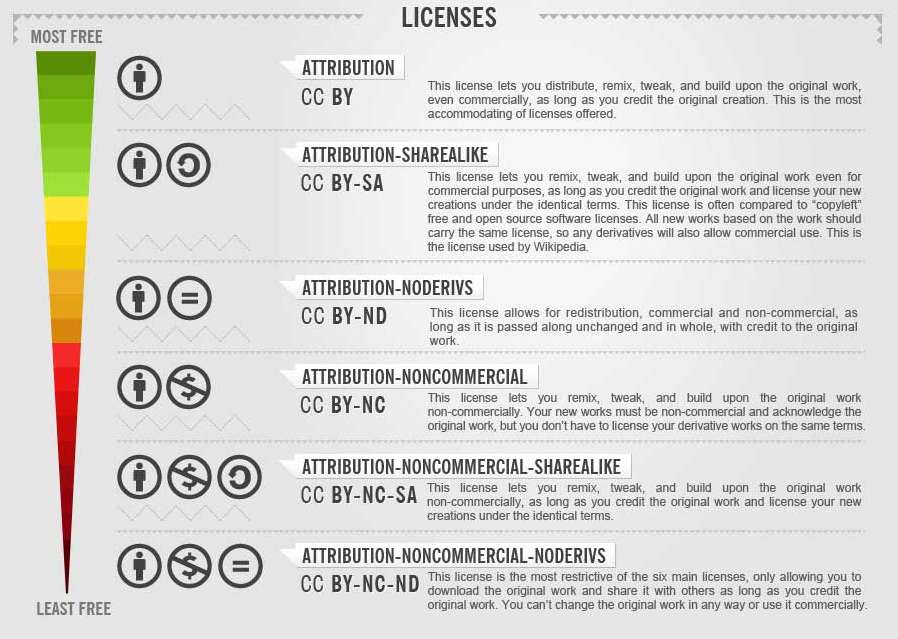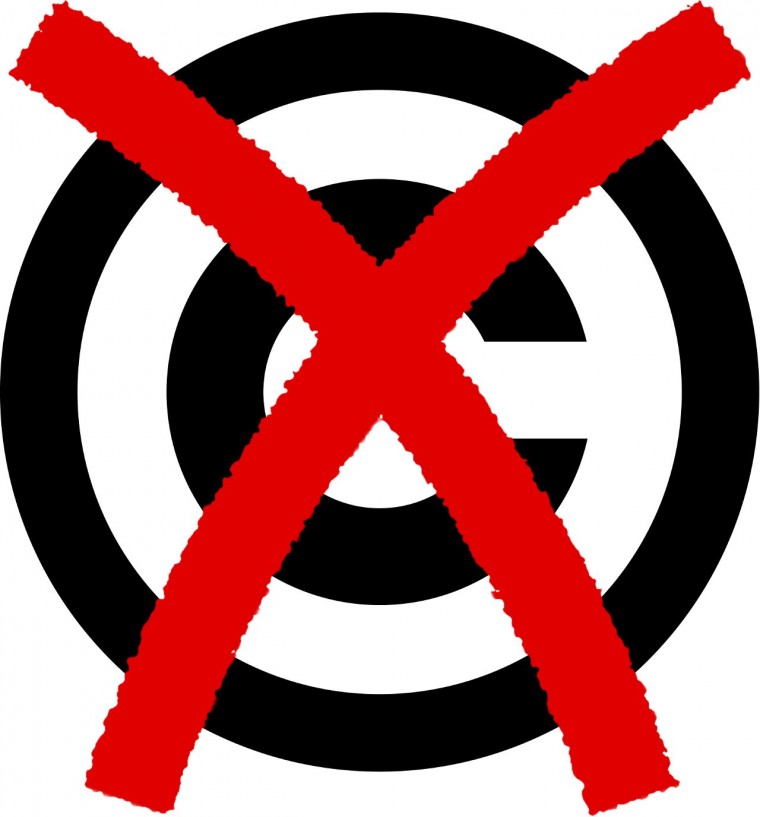Creative Commons (CC) was founded in 2001 to resolve the problem with the use of author’s works in the constantly changing web area where traditional copyright law do not perform all the necessary functions and implies making many bewildering procedures to gain access to works. CC in its turn allow creators to select the level of freedom they want their masterpiece to carry that significantly simplifies collaboration and co creation among creative workers (Creative Commons, 2007). Its ‘mindset draw from the work of the free software movement'(Fitzgerald and Oi, 2004) where freedom means free access to source code.
The first set of CC licenses that were partially based on GNU GPL license was released for free in December, 2012 (Creative Commons, 2016). Currently, around 1.1 billion works are licensed under Creative Commons and its licenses ‘have been further improved, and ported to over 50 jurisdictions’ (Creative Commons, 2016).
The main idea of Creative Commons is the retention of intellectual property rights with an opportunity to set license terms differently according to owners’ preferences, that facilitates free culture of sharing and reuse (Elkin-Koren, 2006).
Creative Commons’s ideology could be summarised as follows:
1) Creativity relies on access to and use of preexisting works;
2) Copyright law creates new barriers to accessing works and becomes an obstacle for sharing and reusing creative works;
3) The high costs associated with the copyright regime affect individuals in particular, limiting their ability to access and reuse creative works;
4) Copyrights could be exercised in a way that would promote sharing and reuse (Elkin-Koren,2006).
There are six different CC licenses that authors may apply to their works in accordance with their preferences:

Creative Commons Infographic – (Hopkins, 2012).
The CC video-tutorial explains the application of the licenses in a clear and detailed way:
